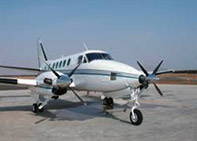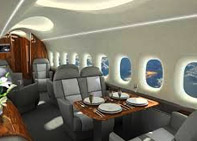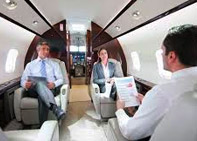Since the Wright Brother’s first flight in 1903, the aviation industry has seen a sea change in terms of speed, flying technology etc. which has brought the world closer. Every year, air traffic is increasing steadily, but the fundamental concept hasn’t changed much. Aircraft, airports and the infrastructure required to operate are becoming more and more complicated instead. Also, it has helped climate change through substantial CO2 emissions.
Globalisation and the needs of today’s market are putting air transport under pressure. The aviation industry has set a target of cutting its CO2 emissions by 50% until 2020, which is very ambitious with the percentage rise in air transport.
Clip-Air has proposed a revolutionary concept in the transport of passengers and freight to solve this puzzle. Clip-Air or pod plane was re-evaluated by the École Polytechnique Fédérale de Lausanne (Swiss Federal Institute of Technology in Lausanne) in Switzerland. “Airports have become ever more disconnected, waiting times are becoming longer, traffic levels are increasing, and overloads and delays are increasingly becoming the norm in air travel,” says Claudio Leonardi, in charge of the Clip-Air project.
Clip-Air’s revolutionary air transport concept is – a flying wing which will carry mobile and interchangeable capsules (Like an Eagle holding a large fish). The clip-Air plane will have a support structure, wings, engines, fuel tanks, and a cockpit but without the passenger cabin or cargo space. On the other hand, there will be a load to be transported either passengers or freight.
It will be a capsule exactly like the fuselage of a conventional plane without fuel, gear or any of the other parts and equipment of an aircraft. The principle behind this is the adoption of the flexibility of rail transport into air transport or ‘to make airports reach into railway stations’ as Clip-Air quotes.
To put it in simple words, the futuristic concept of Clip-Air travel is like this – A plane lands at an airfield – the underbelly capsule or fuselage or passenger cabin of the aircraft gets detached – then is transferred to a nearby train, and continues its journey toward its destination in the city centre or another city. With this, the travel suddenly becomes a one-seat, hassle-free ride — the aim of a group of Swiss researchers with the conceptual Clip-Air project.
The researchers’ group website says, “It would take between 40 and 50 years for Clip-Air to become operational using three capsules – a considerable amount of time.” They plan to develop a private plane prototype in the next five to 10 years and a more modest-sized prototype that could fit 150 passengers in 10 to 15 years.







Leave a Reply
You must be logged in to post a comment.